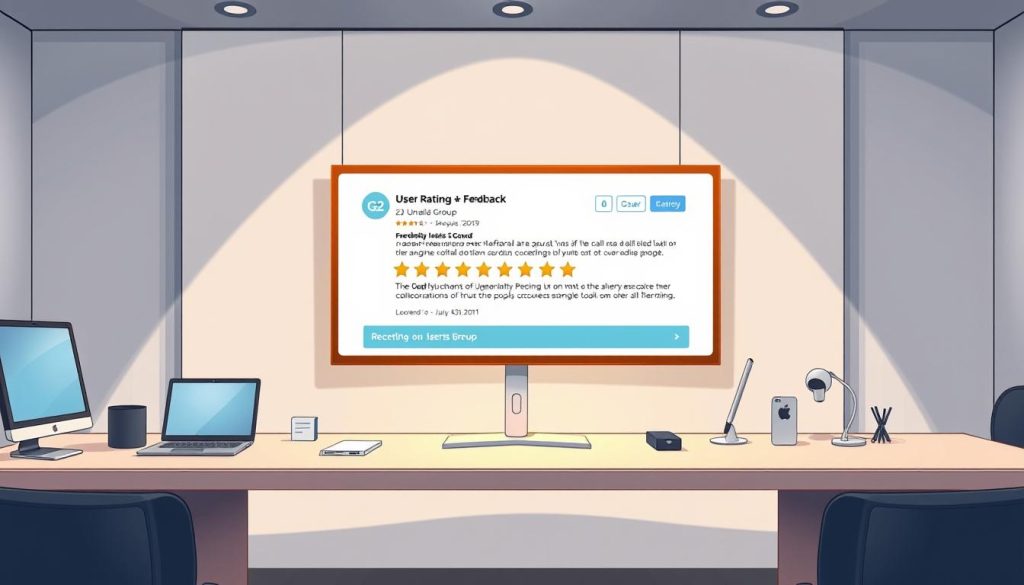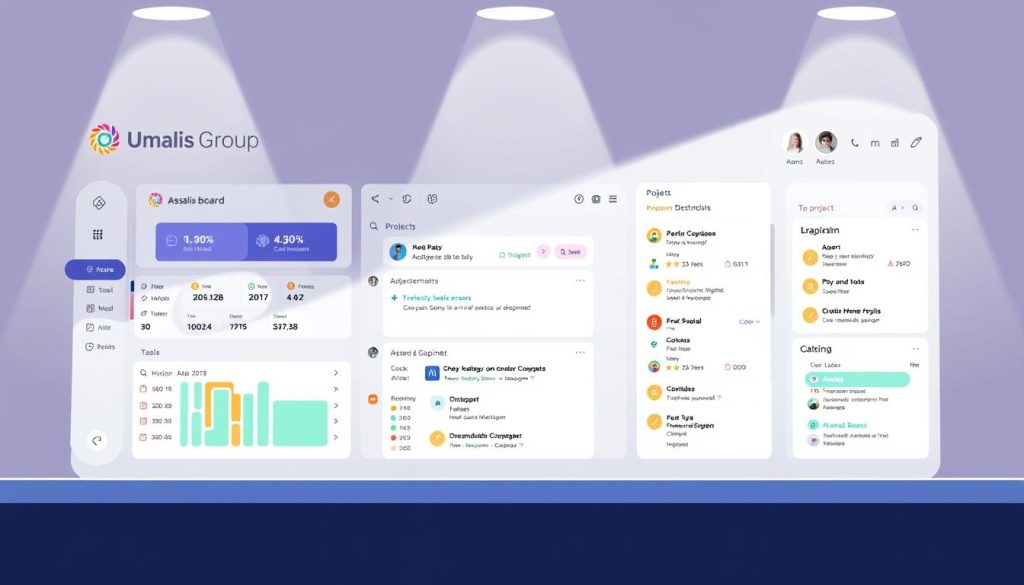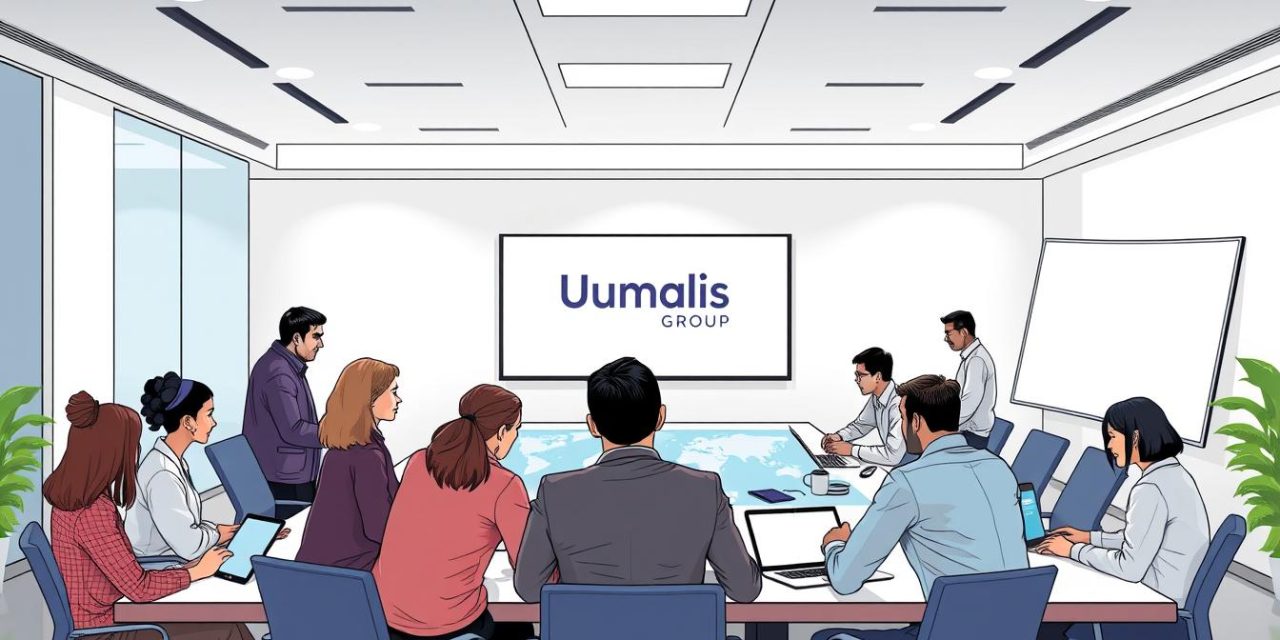Did you know that over 70% of global teams now include remote workers? This shift has made effective teamwork more important than ever. Staying connected is the key to success.
Many of us know the frustration of a scattered workflow. Endless email chains, lost files in chat apps, and missed updates can kill momentum. It feels like you’re working harder, not smarter.
The right set of collaboration tools can change everything. They turn chaos into clarity. Your group can share ideas, manage projects, and hit deadlines together, no matter where everyone is located.
This guide cuts through the noise. We will explore over 11 top-rated platforms. You will get details on features, pricing, and real user experiences. Our goal is to help you find the perfect fit for your team’s unique needs.
Table of Contents
Key Takeaways
- The modern workplace heavily relies on solutions for distributed teams.
- Inefficient communication channels often hinder productivity and create frustration.
- The right software can dramatically streamline workflows and improve organization.
- This article provides a detailed analysis of leading platforms to aid decision-making.
- Evaluating features, cost, and user feedback is crucial for selecting the best option.
- Finding a system that matches your specific work style is essential for success.
Introduction to Digital Collaboration Tools
Teamwork today looks very different from just a decade ago, with new approaches emerging. The modern workplace demands efficient ways for people to work together effectively.
Understanding the Importance of Team Collaboration
According to Gensler’s 2025 Global Workplace Survey, 51% of employees now engage in some form of group collaboration. This statistic shows how central teamwork has become to getting things done.
Poor communication creates significant problems. A striking 74% of executives report it slows down both speed and quality of work. This directly impacts business outcomes and team success.
How Digital Tools Transform Workflows
Modern platforms revolutionize how teams operate. They replace chaotic email chains with organized systems. Everyone stays aligned on projects and deadlines.
These solutions eliminate common bottlenecks. No more waiting for approvals or hunting down updates. Everything becomes accessible in one central hub.
| Traditional Approach | Modern Solution | Key Improvement |
|---|---|---|
| Physical meetings | Virtual conferences | Time savings |
| Paper documentation | Cloud storage | Accessibility |
| Phone call updates | Real-time messaging | Immediate response |
| Email chains | Organized threads | Clarity |
The right platform creates a seamless experience for all team members. Location and time zones become irrelevant. Information flows smoothly to everyone who needs it.
Benefits of Using Collaboration Tools for Team Productivity
The financial case for implementing these systems is compelling, with most organizations seeing returns within months. According to G2 data, the average payback period is just 10 months. This makes the investment highly cost-effective for businesses of all sizes.
Improved Communication and Real-Time Editing
Modern platforms transform how teams interact. They provide instant messaging and centralized conversation threads. Everyone stays informed and aligned on projects.
Real-time editing capabilities are game-changing. Multiple team members can work simultaneously on documents. This eliminates version control nightmares that slow down progress.
« The ability to collaborate in real-time has reduced our project completion time by 30%. »
Streamlined Project Management
These solutions help teams organize tasks with clear deadlines. Responsibilities are assigned transparently. Progress is tracked visually through boards and timelines.
Administrative burdens like status updates and file searches are minimized. Team members can focus on meaningful work instead of chasing information.
| Traditional Method | Modern Approach | Productivity Gain |
|---|---|---|
| Weekly status meetings | Live progress dashboards | Time savings |
| Email task assignments | Visual task boards | Clarity & accountability |
| Document version emails | Simultaneous editing | Faster completion |
Improved communication and streamlined project management work together seamlessly. Information flows freely and projects advance with minimal friction.
Key Features That Make Digital Collaboration Tools Stand Out
Distinguishing between basic and advanced solutions requires understanding what features deliver real value. The right characteristics transform how teams operate together.
Intuitive design is crucial for adoption. Team members should navigate the system effortlessly without extensive training.
Integration Capabilities and Automation
Seamless connections with existing apps create unified workflows. The best platforms sync with email, calendars, and storage systems.
Automation eliminates repetitive tasks like status updates. This frees up time for more strategic work that moves projects forward.
| Essential Feature | Why It Matters | Ideal Implementation |
|---|---|---|
| App Integration | Creates unified workflow | Syncs with major productivity apps |
| Task Automation | Saves time on routine work | Customizable notification triggers |
| Mobile Access | Enables on-the-go work | Full functionality across devices |
| Security Protocols | Protects sensitive data | End-to-end encryption standard |
Security, Scalability, and Mobile Access
Robust protection measures are non-negotiable. Look for encryption and two-factor authentication to safeguard information.
The system should grow with your organization. Scalability ensures smooth expansion without platform changes.
Mobile functionality keeps teams connected anywhere. Push notifications and offline access support flexible work styles.
Testing through free trials helps confirm the fit. Evaluate how these features work for your specific team needs.
Digital Collaboration Tools: Features and User Reviews
Our comprehensive analysis combines practical experience with community insights for authentic recommendations. We believe real testing reveals what marketing materials often conceal.
The evaluation process involved creating accounts and exploring each platform’s features in depth. We applied these systems to actual projects to understand real-world performance.
Extensive research into G2 user feedback provided valuable community perspectives. This trusted software review platform gathers authentic experiences from actual users.
G2 grid reports helped us understand how different solutions compare. These reports analyze features, usability, and customer satisfaction across the market.
Combining hands-on testing with community wisdom creates balanced guidance. This approach goes beyond claims to reveal genuine performance.
Quotes throughout this article come from verified G2 users. Reviews have been edited for clarity while preserving original meaning.
This dual methodology ensures you get honest, practical advice. It blends expert analysis with collective user experience for your benefit.
Product Roundup Overview: Comparing Top Collaboration Platforms
Our side-by-side analysis of 11 top platforms reveals which systems deliver the most value for different team needs. We evaluated each option against strict criteria to ensure they meet essential requirements for modern teamwork.
To qualify for comparison, each platform must provide robust communication features and document sharing with version control. They also need calendar management and task collaboration capabilities that support complex projects.
Evaluating Features Like Gantt Charts and Visual Boards
Custom workspaces and flexible project views are essential for adapting to various work styles. These features allow both internal members and external partners to collaborate effectively.
Access rights management stands as a critical requirement. Administrators can control who views, edits, or comments on documents and project information. This ensures security while maintaining transparency.
Visual tracking elements like Gantt charts and Kanban boards provide immediate project status understanding. These interfaces help teams organize tasks through intuitive drag-and-drop functionality.
Our comparison helps identify which platform excels in specific areas like automation or communication. This approach supports effective project management decision-making for your unique requirements.
User Ratings and Customer Feedback from G2

What do real users think about the platforms we’ve analyzed? The G2 ratings tell the story. These scores come from verified professionals who have hands-on experience with each system.
- Bordio: 5/5
- Runrun.it: 4.8/5
- monday Work Management: 4.7/5
- ClickUp: 4.7/5
- ProofHub: 4.6/5
- Slack: 4.5/5
- Smartsheet: 4.4/5
- Asana: 4.4/5
- Trello: 4.4/5
- Teamwork.com: 4.4/5
- Wrike: 4.2/5
Insights on Ease of Use and Learning Curves
User review data reveals clear patterns about usability. The highest-rated platforms typically feature intuitive interfaces that teams can adopt quickly.
Many users note that some powerful systems require initial setup time. However, they consistently report this investment pays off through improved workflow efficiency.
Feedback highlights daily usability factors like navigation clarity and feature discoverability. Good onboarding support and available tutorials make a significant difference for teams.
This customer review information helps prospective users set realistic expectations. Understanding both praise and constructive criticism guides better platform selection.
Pricing, Free Trials, and Cost-Effectiveness Analysis
Budget considerations play a crucial role when selecting the right platform for your organization. Understanding the investment required helps teams make informed decisions that align with financial constraints.
Breakdown of Free Plans and Subscription Models
Most platforms offer flexible pricing structures to accommodate different team sizes. You’ll find everything from budget-friendly options like Trello at $5 per user monthly to comprehensive solutions like ProofHub at $45 monthly for unlimited users.
Free trials typically last 14-30 days, giving teams ample time to test capabilities. Many providers also offer freemium models with limited features. For example, monday provides 3 boards for 2 users, while Asana supports unlimited tasks for up to 10 team members.
Per-user pricing ranges from $5.99 to $10.99 monthly when billed annually. This model scales with your organization’s headcount, making total cost calculations essential. Flat-rate options like ProofHub’s $45 plan can be more economical for larger teams since costs don’t increase with each additional member.
Taking advantage of free trials is vital for evaluating whether a platform’s features match your workflow needs. This testing period helps avoid commitment to annual subscriptions that might not fit your team’s working style.
Remember that pricing details can change, so verify current rates on official websites. These figures provide a solid foundation for budget planning as you explore freelance tools and team solutions.
Smartsheet: Best for Project Planning and Detailed Workflow Management
https://www.youtube.com/watch?v=sDG0GneDKZQ
When detailed workflow management requires precision, Smartsheet emerges as a top contender. This platform combines spreadsheet familiarity with powerful project management capabilities, earning a solid 4.4/5 rating from G2 users.
Teams appreciate how easily they can adapt templates for various needs. Whether tracking content calendars or managing budgets, the customization options suit virtually any project type.
Pros and Cons Based on Real-World Usage
Users consistently praise the platform’s Gantt chart functionality. These visual timelines make complex project organization straightforward by showing dependencies and deadlines clearly.
Some teams note that setting up task relationships requires learning time. Integrations with popular apps sometimes need extra configuration steps during initial setup.
Unique Features: Customizable Templates and Gantt Charts
The variety of view options lets team members work in their preferred format. Different perspectives help everyone understand project status quickly.
| View Type | Best For | Key Benefit |
|---|---|---|
| Grid View | Data entry & analysis | Spreadsheet familiarity |
| Gantt Chart | Timeline planning | Visual dependency tracking |
| Card View | Task management | Kanban-style organization |
| Calendar View | Schedule oversight | Time-based planning |
Implementation typically takes about 2.3 months, with most organizations seeing return within 12 months. The free plan includes 2 sheets with 2 editors, while paid plans start at $9 per user monthly.
Once configured, integrations with Google Workspace, Microsoft 365, and Slack provide reliable connections for long-term project success.
monday Work Management: Leading the Way in Workflow Automation
With a 4.7/5 G2 rating, monday Work Management stands out for its exceptional workflow automation capabilities. This platform helps teams eliminate repetitive manual tasks through intelligent automation triggers.
Streamlined Automation and Integration Options
The system automatically handles assignments, status updates, and notifications based on preset conditions. This saves significant time on administrative work.
monday’s flexibility allows diverse applications from project tracking to CRM functionality. The extensive app store connects with popular tools for seamless collaboration across systems.
The free plan includes 3 boards for 2 users, while paid plans start at $9/user monthly. Implementation averages just 1.7 months with ROI achieved within 11 months.
User Experiences and Review Highlights
Users praise how automations simplify complex workflow management. One creative team member noted seamless Slack integration for instant notifications.
« monday.com handles high-res PDF attachments beautifully, making client collaboration effortless across our distributed team. »
While initial setup requires some time investment, users find the efficiency gains justify the effort. The visual interface with customizable boards makes tracking progress intuitive for all team members.
Asana: Optimized for Task Management and Visual Project Tracking

Teams seeking precise task organization find Asana’s visual approach transforms how work gets done. This platform earns a solid 4.4/5 G2 rating by making complex project management feel intuitive.
Asana uses a task-based system where you create main assignments like « produce article » and break them into detailed subtasks. Each step gets assigned to specific team members with clear deadlines.
Effortless Task Coordination and Timeline Management
The system shows how delays in one task impact downstream work. This helps project managers spot bottlenecks early and adjust timelines proactively.
Visual boards with drag-and-drop simplicity let you see project status instantly. You can move tasks through different completion stages with ease.
Project timelines lay out all deadlines visually and connect interdependent tasks. One delay automatically shows cascading effects across the entire schedule.
The generous free plan includes unlimited tasks and projects for up to 10 users. Paid plans start at $10.99 per user monthly for advanced features.
Users praise how easily large projects break into manageable pieces. The multiple view options—list, calendar, board, timeline—provide clarity for every team member.
Seamless integrations with Google Calendar, Slack, and CRM systems keep information synchronized. This eliminates constant platform switching for teams using various freelance tools.
Some users note that deeply nested tasks in large projects require extra navigation. Custom report generation may need manual adjustments for specific needs.
Real-Time Collaboration and Remote Team Engagement
The Sunday Times relies on real-time editing to meet tight print deadlines with global contributors. This approach has become essential for modern groups working across different locations.
Instant messaging and video calls keep everyone connected. Team members can tag colleagues for immediate attention and assign tasks directly within documents.
Simultaneous editing eliminates version control problems. Multiple people can work on the same file with changes visible instantly. Google Docs demonstrates this reliability with minimal lag internationally.
Quality real-time collaboration requires strong technical infrastructure. Network reliability matters most for international teams where connections vary.
| Traditional Method | Real-Time Feature | Team Benefit |
|---|---|---|
| Email attachments | Simultaneous editing | No version confusion |
| Scheduled meetings | Instant messaging | Immediate problem-solving |
| Phone call updates | Presence indicators | See who’s available |
| Separate task lists | In-document assignments | Context remains clear |
Remote engagement improves with notification systems and mobile access. Presence indicators show who’s online, creating virtual office environments.
This approach isn’t just about speed—it builds connection and shared purpose. Distributed teams feel like they’re working together in the same room.
Security, Data Protection, and Integration Capabilities Across Platforms
The ability to safeguard confidential data while maintaining smooth workflow integration separates superior platforms from basic options. Choosing the right system requires careful evaluation of both protection measures and connection capabilities.
Ensuring Confidentiality and User Access Control
When teams handle sensitive client information or proprietary strategies, security becomes non-negotiable. Essential protection features include end-to-end encryption and two-factor authentication.
Compliance with standards like GDPR and SOC 2 provides additional assurance. These certifications demonstrate a platform’s commitment to data safety.
User access control systems allow administrators to define granular permissions. Team members can only view or edit documents relevant to their roles.
Robust security manages both external threats and internal access. This prevents confidential information from reaching unintended users.
Integration capabilities are equally important for platform selection. The best systems connect seamlessly with email, calendars, and file storage.
API access provides ultimate flexibility for technical teams. Custom workflows can be built to match unique business processes.
| Security Feature | Platform Type | Implementation Level | User Benefit |
|---|---|---|---|
| End-to-End Encryption | Enterprise Grade | Standard | Complete data protection |
| Two-Factor Authentication | All Platforms | Recommended | Unauthorized access prevention |
| GDPR Compliance | International Use | Required | Legal protection assurance |
| API Integration Support | Advanced Systems | Optional | Custom workflow creation |
Comprehensive integration support eliminates constant app switching. Information flows smoothly across the entire technology stack when systems work together effectively.
Future Trends in Digital Collaboration Tools for 2025
The workplace of tomorrow is already taking shape through innovative platform capabilities. According to Gensler’s 2025 survey, 51% of employees now engage in some form of teamwork. This makes effective systems more crucial than ever.
Artificial intelligence is becoming the backbone of smart platforms. AI handles intelligent task assignment and predicts project timelines automatically. It also creates meeting summaries and suggests relevant content.
Emerging Features and Industry Predictions
Advanced analytics help groups understand productivity patterns. They identify bottlenecks and optimize resource allocation. This data-driven approach supports evidence-based decisions.
Hyper-personalization adapts systems to individual preferences. Platforms learn working styles to maximize efficiency for each person. This customized experience reduces the learning curve.
Asynchronous features accommodate global teams across time zones. People contribute when it works for them without waiting for others. This flexibility maintains momentum around the clock.
Immersive experiences like virtual workspaces replicate in-person dynamics. Augmented reality meeting rooms and digital whiteboarding create engaging environments. These innovations make remote interaction feel natural.
The most successful platforms will balance powerful features with simplicity. They must serve teams with varying technical expertise while driving meaningful workflow improvements.
Conclusion
Effective group work hinges on choosing solutions that eliminate common communication barriers and streamline processes. The right collaboration tools can transform chaotic workflows into organized systems that boost productivity.
Selecting the best team platform requires understanding your specific needs and workflow preferences. Make sure to test different options through free trials to find the perfect fit for your projects.
Moving from scattered email threads and lost notes to centralized platforms represents a fundamental shift. This approach keeps all conversations and project details in one accessible location.
Whether your team needs robust management features or simple task tracking, there’s a solution designed for your use case. Successful implementation requires proper onboarding and commitment to the new process.
Investing time to find the right tools pays off through improved communication and faster completion. Your team will feel more connected and engaged, ready to tackle any challenge together.
FAQ
What are the main benefits of using a platform like Asana or monday.com?
These platforms help teams get more done by improving communication. They offer features like visual boards and timelines that make it easy to see progress and manage tasks in one place.
How do these platforms help with project planning?
Tools such as Smartsheet provide powerful planning features. You can use Gantt charts to map out timelines and customizable templates to kickstart any project, ensuring every detail is covered.
Is it difficult for a team to learn a new system?
Most top-rated platforms are designed for ease of use. While there’s always a short learning period, providers offer strong support and resources to help your team get up to speed quickly.
Can I try a tool before committing to a paid plan?
Absolutely! Many services offer a free trial or a feature-rich free plan. This lets you explore the interface and key features to make sure it’s the right fit for your team’s workflow.
How important are security and data protection?
Security is a top priority. Leading platforms use advanced measures to protect your information. They provide user access controls to ensure only authorized team members can view sensitive content.
What future trends should we look out for?
Expect more automation and smarter analytics. Systems are increasingly using AI to suggest workflow improvements and provide deeper insights into team performance and project health.





